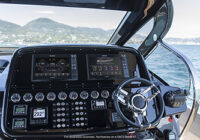Catch and release is an effective way of enjoying fishing without impact on the environment, writes Scott Thomas.
There’s something special about watching a fish swim away. Most of my memorable catches were released to fight again another day. It may have been a big trout in New Zealand, a marlin off Sydney, or a giant bass in a North Coast freshwater stream. All of these captures bring back memories and what stands out the most is watching these fish swim away.
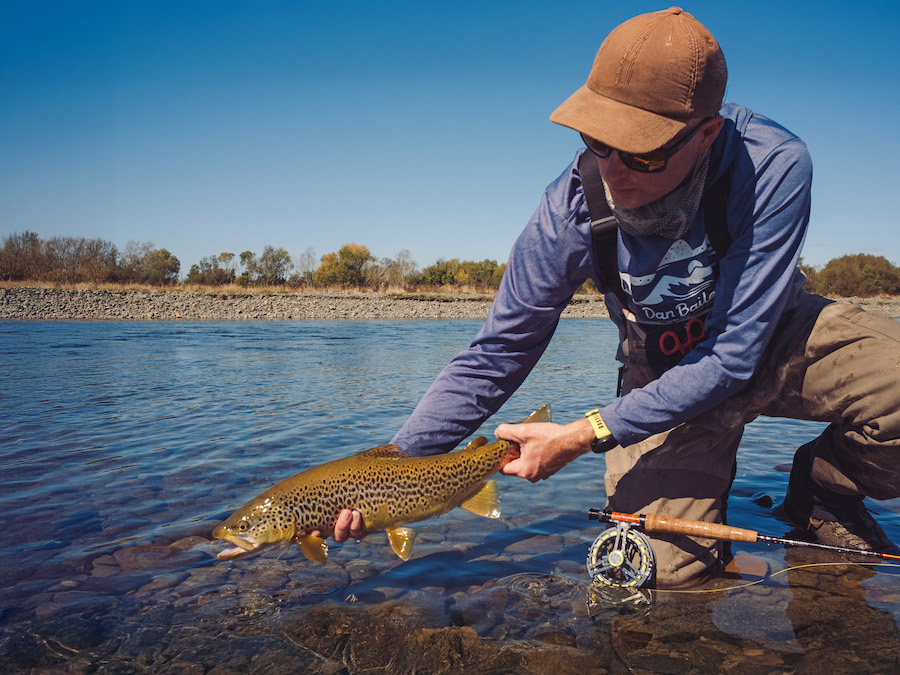
The late and great American fly fisher, Lee Wulff, once said: “Game fish are too valuable to be caught only once”. He made a great point and the idea of valuing fish as more than sustenance helped create the sport fishing movement and allowed fishing to evolve into a sustainable pastime. Over the next few pages, let’s look at some techniques, rules, and tips for ensuring the fish you release survive to be caught again and again.
Why catch and release?
There are two main reasons you would release a fish after it was caught. The first reason is to voluntarily conserve stocks of fish. You may have caught and kept one or two fish or simply planned to release all the fish you caught. Perhaps you would rather release a fish and catch it again another day or allow someone else to catch it. It’s actually not uncommon to catch a fish you have previously caught. Fishing is fun and the objective isn’t always keeping fish. You can spend a day on the water and have very little impact on the environment.
The second reason for releasing a fish is that you’re following the local rules and regulations. This may mean you have exceeded your bag limit or perhaps the fish is too small or too large.
Bags and size limits exist to ensure fish stocks remain in good shape. Size limits allow the fish to breed at least once before being caught.
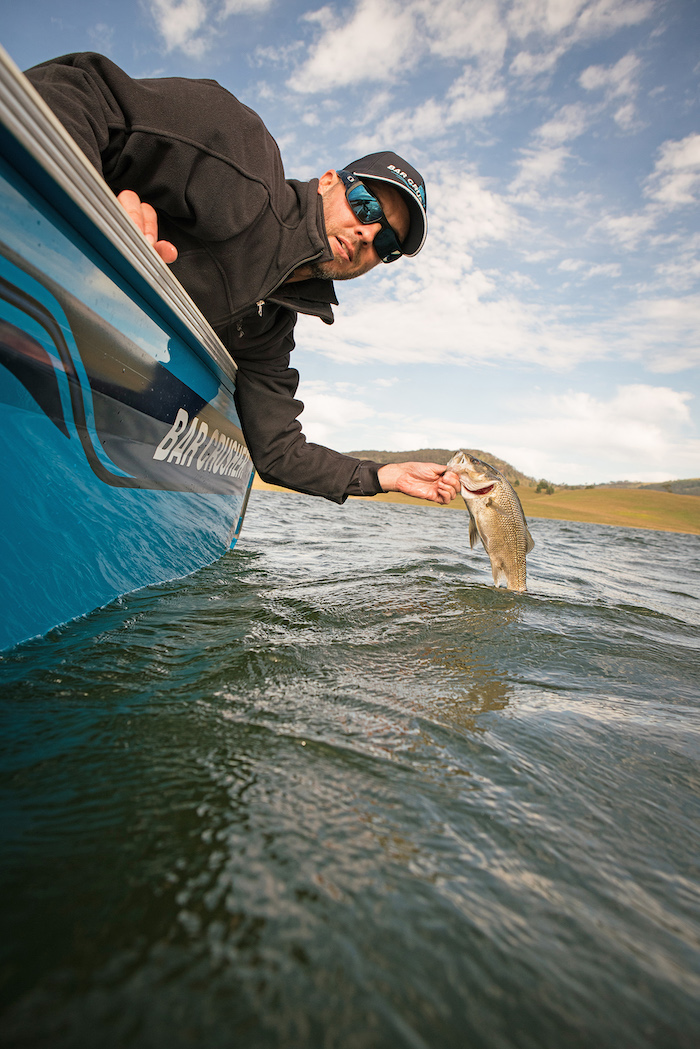
There are minimum, maximum and in some cases, a slot limit. The slot limit protects small juvenile fish and big ‘breeders’ and allows you to keep fish in between. This keeps the fish stocks sustainable. Likewise, bag limits ensure not too many fish are being kept.
Survival rates
There have been many studies into the survival rates of released fish. It would surprise many non-fishers just how effective catch and release can be if you use proper handling techniques.
Most of these studies show some fish have survival rates of over 90 per cent. Survival rates come down to a few factors, which include the type of species, time out of water, fight time, deep hooking and more.
If you understand these factors and release your fish with minimum impact on the fish, there’s a very good chance they will survive.
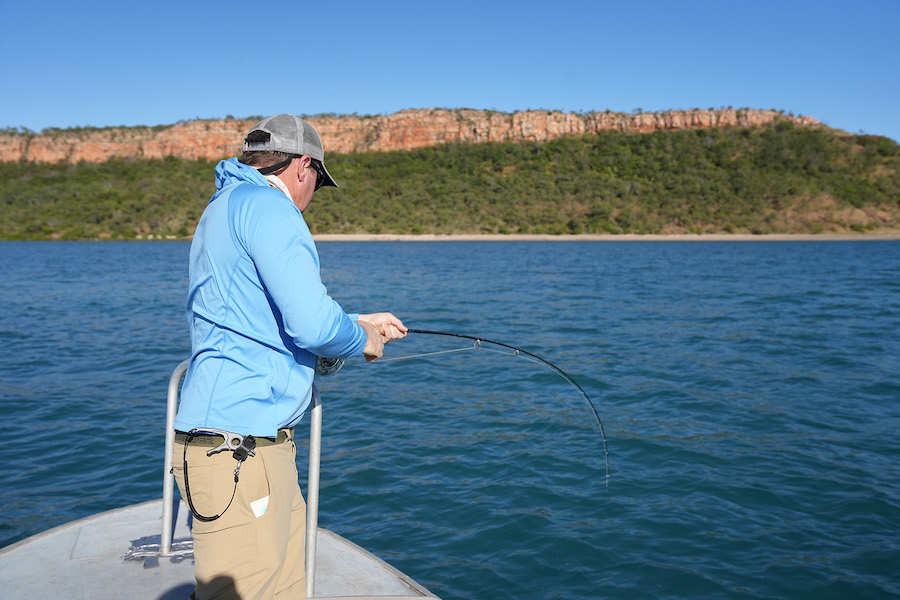
Handling
Proper handling techniques make all the difference. Dr Ben Diggles, a marine scientist from Queensland with a lifetime of experience in this field, says most mistakes are made once the fish is in hand.
“Anglers should minimise fish handling,” he says. “Don’t handle them at all, if possible, otherwise wet hands to protect the slime layer – no cloths or rags that remove scales. The aim should be to absolutely minimise air exposure. Leave the fish in the water or get it back into the water ASAP – no big photo sessions. If the hook is deep, cut the line if you can’t easily get the hook out. These hooks fall out in a few hours or days, especially if barbless.”
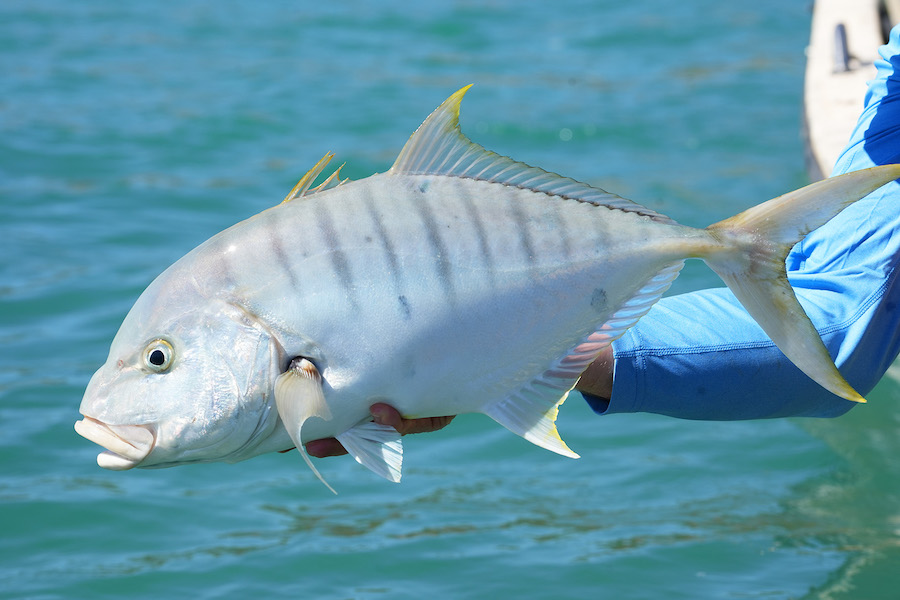
As Diggles says above, it’s important to keep the fish wet and ensure the time spent out of the water is at a minimum. That said, the theory that fish can only spend the same time away from water as humans spend underwater is not really correct. It’s not that simple. I’m no scientist, but my understanding is oxygen levels between water and air vary greatly and so do humans and fish. Even so, it still pays to keep the fish wet and release it as soon as possible.
When you land a fish, using a wet hand, grab the fish and support its body. Do not put your fingers in the gills. Using pliers, remove the hooks and lower the fish back into the water. Some fish such as tuna and other pelagic fish can be ‘speared’ back into the water. The sudden rush of water through the gills helps the fish swim off safely. If the fish isn’t swimming away, gently moving the fish back and forth to get water through the gills can help.
If you find that your hook has been swallowed, it’s important to snip the line and let the fish go. Don’t under any circumstances, try and wiggle the hook from the fish’s throat. Studies have found that over 70 per cent of deep-hooked fish survive if the line is snipped. Most fish regurgitate the hook within days and all hooks rust. The same studies revealed no fish survived when an attempt was made to remove the hook. If the hook is in the side of the mouth, it will come out easily.
Gear for releasing fish
Now that you have some basic understanding of proper fish handling, let’s look at some tools to make it easier and more effective. A good net will help save time beside the boat. Most nets these days won’t hurt the fish. Some of the older and cheaper nets actually damaged the fish’s scales and also tangled lures and hooks. Since then, these ‘environmentally friendly’ nets are made from rubbery material that is gentle on fish and tackle.

A net isn’t always the preferred method. Some people use a cradle to pick up large fish from the water. I’ve seen kingfish and big fish successfully caught and released with these. I’ve also seen homemade measuring cradles. In this instance, the fish is netted and placed on the wet measuring cradle. A quick measurement and photo is taken before the cradle slides the fish back in the water. These are more commonly used in catch and release tournaments.
What about hooks? Diggles says successfully catching and releasing fish all starts with selecting the right gear.
“Use appropriate line strength to minimise fight time, circle or barbless hooks rather than ‘J’ style hooks, and use single hooks instead of trebles on lures,” he says. “Then try to fish actively rather than passively to minimise deep hooking, which is the greatest source of mortality for released fish.”
As Diggles notes, the shape of a hook can make a big difference. Circle hooks are more likely to hold in the fish’s lip rather than being swallowed. They’re a great choice for certain types of bait fishing, but not so suitable for lures. For lures, when it’s feasible, try using a single hook rather than trebles. Trebles can get tangled and create a mess when you’re attempting to remove them.
Many people also prefer to use barbless hooks. This doesn’t work in all scenarios, but it’s a great option for removing fish quickly. Another bonus when using barbless hooks is removing them from fishos. If you accidentally get hooked, it’s a simple job of sliding the hook away. If it has a barb, it could be a trip to the hospital. In fact, I know charter operators in remote places that insist on barbless hooks. Getting a giant barbed hook in the face when you’re several hundred kilometres from the nearest town could be a big problem!
Pliers are another useful item. Choose long-nose pliers and opt for aluminium or stainless steel. There are many fishing-specific pliers for this purpose sold by top brands. Choose a pair that’s relative to the size of the fish you intend to catch. I wouldn’t want a tiny pair of pliers around a big toothy mackerel!
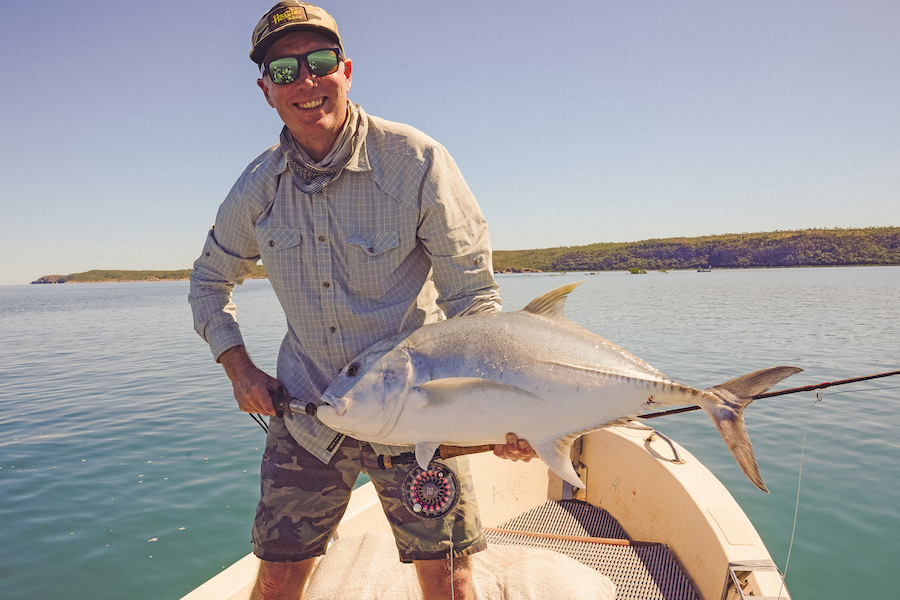
On that note, some fish can be held by their lips, while other fish such as mackerel would literally slice off your finger. Don’t underestimate how dangerous these fish are. One solution is a pair of ‘lip grips’. These can be clamped in the fish’s mouth. That will allow you to safely hold the fish while the hooks are removed. Gloves are also useful and can save fingers from being cut by fish and hooks.
Finally, on the subject of gear, it’s important to ensure the tackle you use is sufficient enough to fight and land that fish in a reasonable time. You don’t want extended fights when releasing fish. Some fish such as tuna and marlin will show noticeable signs of fatigue after a long fight and releasing these fish won’t end well. Use heavier tackle and make it a quick fight.
Species
Some species release better than others and all fish will require some different handling. This may be because one has teeth or one is smaller and can be handled differently.
Big fish such as marlin and tuna should remain boat-side and be released immediately. Other fish such as bream and bass can be brought onboard and handled easily before release. Have a plan on what you do to release the species you intend to target. Bring along a net that will fit the fish and have the skills and equipment ready before the fish is hooked.
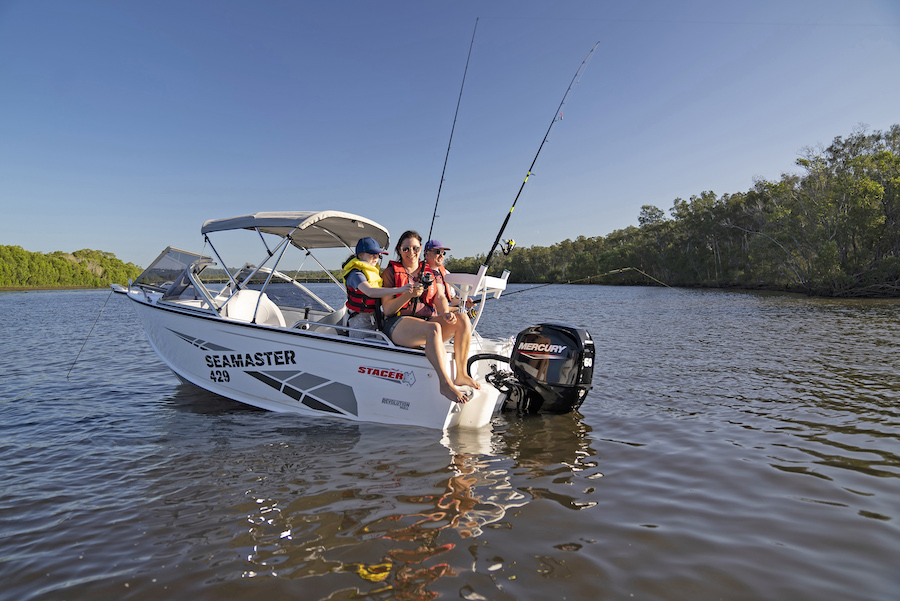
Barotrauma
Barotrauma refers to the problem of bringing fish up from deep water. The change of pressure between the deep water and surface water affects the fish’s swim bladder. In some cases, you can actually see the fish’s stomach protruding outside its mouth. It’s more common than you think and even some freshwater lakes have water deep enough to become a problem.
What can you do? There are methods where you can attach a ‘release weight’ to the fish that sends it back down quickly. Studies have shown that these can work well.
“If the water is deeper than 10 metres, barotrauma is an added complication that requires anglers to use a release weight to recompress the fish or avoid fishing catch and release in deeper water altogether,” advises Diggles.
Some fish don’t respond well to barotrauma and if you target these you may want to consider keeping the fish to eat. Once you have enough, pack up your gear and go home. Any fish released will die anyway.
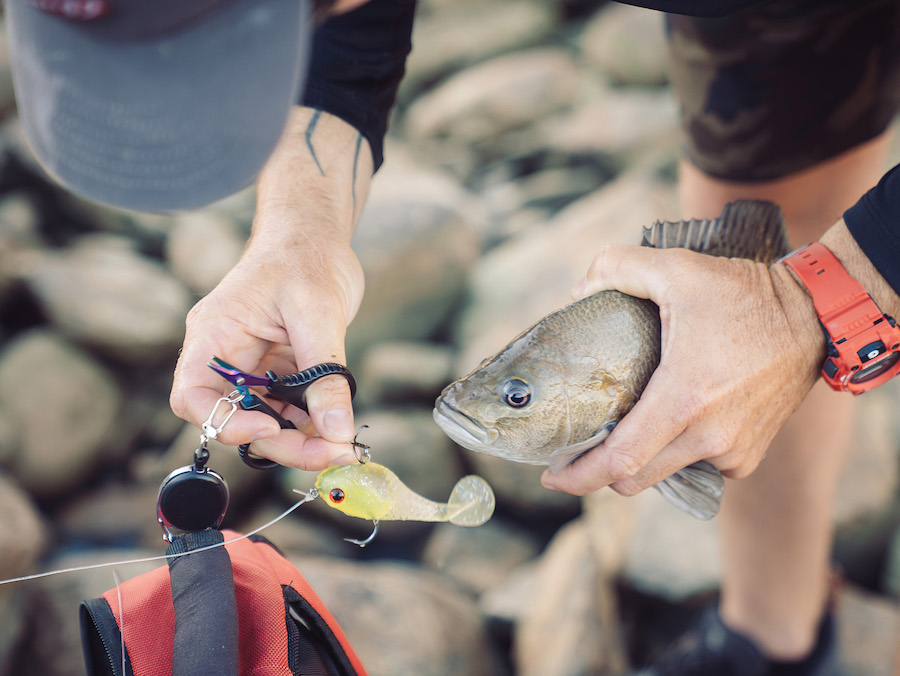
Tagging and releasing
Tagging and releasing fish has long been a popular technique for game fishos. It’s citizen science, a way of using fishing to gather important scientific data. The data can record fish movements and habits and allow fisheries departments to format rules and regulations to ensure strong stocks remain. It’s also a great way of keeping score of fish you have caught and is often used in gamefishing tournaments to measure competitor and teams.
Another interesting factor is it allows you to see the effectiveness of catching and releasing. I know fishos who have caught, tagged and recaptured the same fish more than four times! It’s incredible to see, although, unfortunately, it also points to a small population of fish in the area. Even so, without this data, fisheries departments would be unaware of any problems.
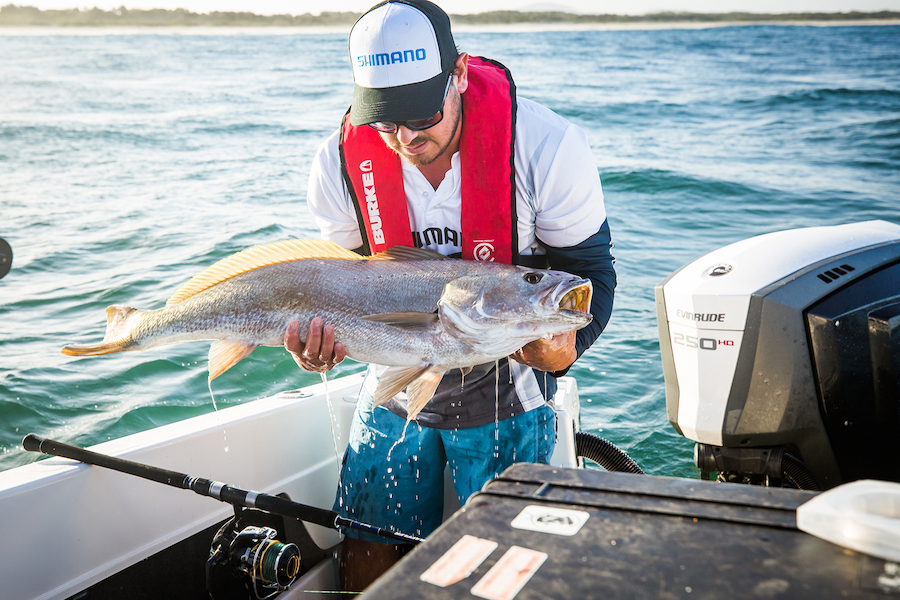
The wrap up
While I love eating fish and consider it the most sustainable way of enjoying food, I also recognise that I can’t keep every fish I catch. Some fish, depending on species, location and other factors, deserve to be carefully released. It may also be too small or you may have exceeded your bag limit. Whatever the reason, it’s important to understand the recommended practices for releasing fish so they have the best chance of being caught again!
Citizen science
If you want to get involved in citizen science and help protect fish stocks, tagging and releasing fish makes a great start. There are many species that are tagged and released, not just big game fish. Start by contacting your state’s fisheries department. Typically, their website will have details on the tagging program. They will suggest the gear to use, how to use it and how to submit details of tagged fish. Seeing a fish you released recaptured is really interesting. You can see how far it has travelled and how much it has grown.
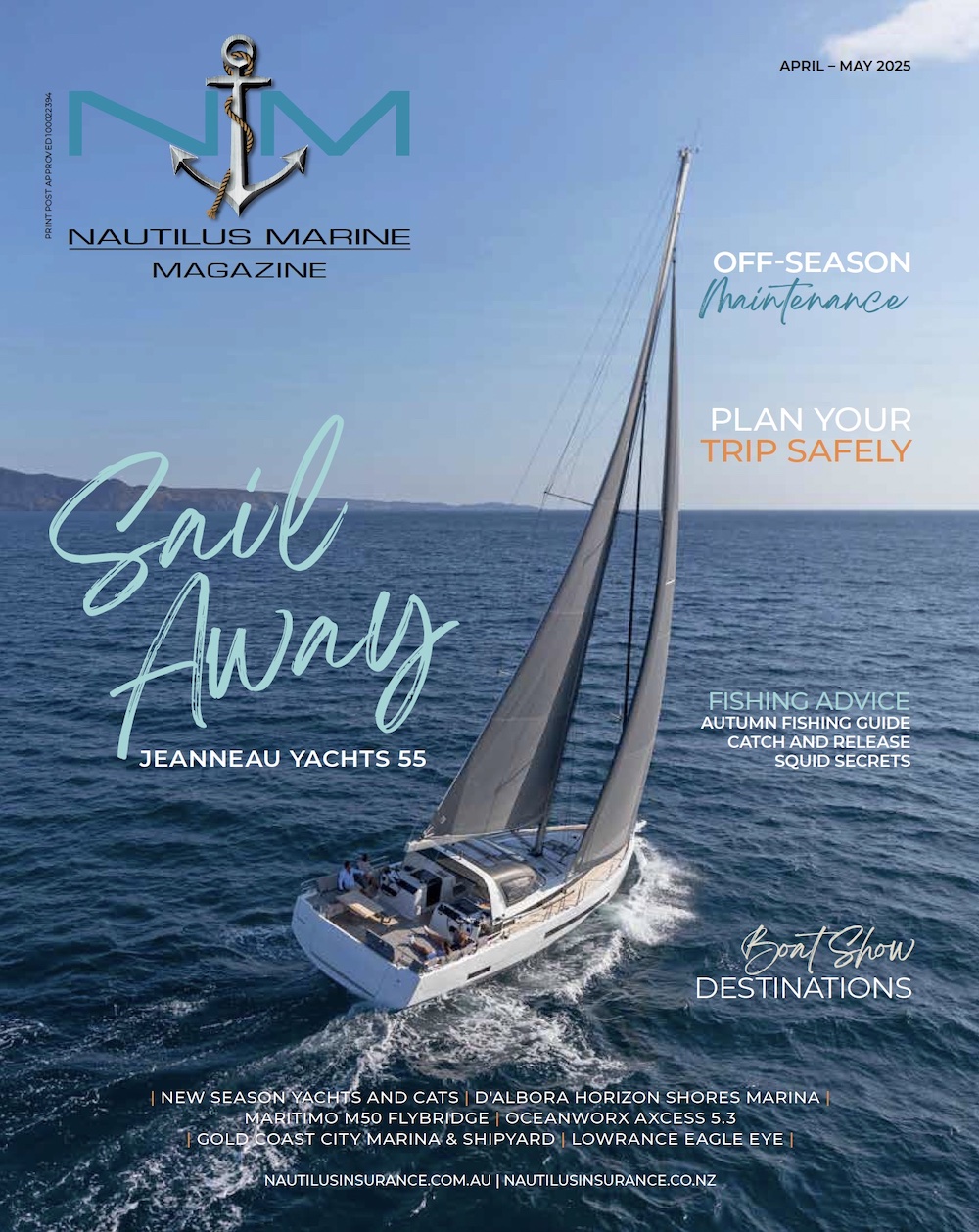
This story was published in the April-May issue of Nautilus Marine Magazine.
About Nautilus Marine Magazine
Nautilus Marine Magazine offers readers 100 pages of content to support their on-water lifestyle. Published every two months across Australia and New Zealand for an audience of Nautilus Marine Insurance customers, members of the marine industry and boating enthusiasts, our magazine features expert features, boat profiles, interviews with boating and sailing identities, fishing adventures, travel destinations, boating lifestyle content and dining. No matter what side of the boating spectrum you sit on, power or sail, Nautilus Marine Magazine is a must read.
About Nautilus Marine Insurance
Nautilus Marine Insurance is a leading provider of insurance solutions for recreational vessels and marine business assets across Australia and New Zealand, protecting over 45,000 vessel owners and marine industry members. For over 19 years, Nautilus Marine Insurance has been a specialist supplier of insurance for pleasure craft and marine business assets and liability insurance. Nautilus Marine Insurance provide coverage for pleasure craft of all sizes, ranging from sailing dinghies and personal watercraft (PWCs) through to yachts, runabouts, and luxury motor yachts as well as commercially operated boats and marine businesses. Through its Industry Lines division, Nautilus Marine Insurance also specialises in providing tailored business insurance for clients servicing the recreational boating market including marina operators and owners, yacht clubs and boat clubs, boat dealerships and most marine trades including boat repairers and boat service providers. Thousands of professional insurance advisers and brokers choose to work with Nautilus Marine Insurance. These insurance experts trust the breadth of Nautilus Marine’s products and claims support to recommend our products and services to their clients. Nautilus Marine Insurance has a passionate team of over 90 staff and offices across Australia and New Zealand. Nautilus Marine Insurance is a business name of NM Insurance Pty Ltd, ABN 34 100 633 038, AFSL 227186. It has binding authority from Zurich Australian Insurance Limited (ZAIL) which allows it to enter into and arrange policies of insurance and handle and settle claims made under them. Visit nautilusinsurance.com.au to find out more.







